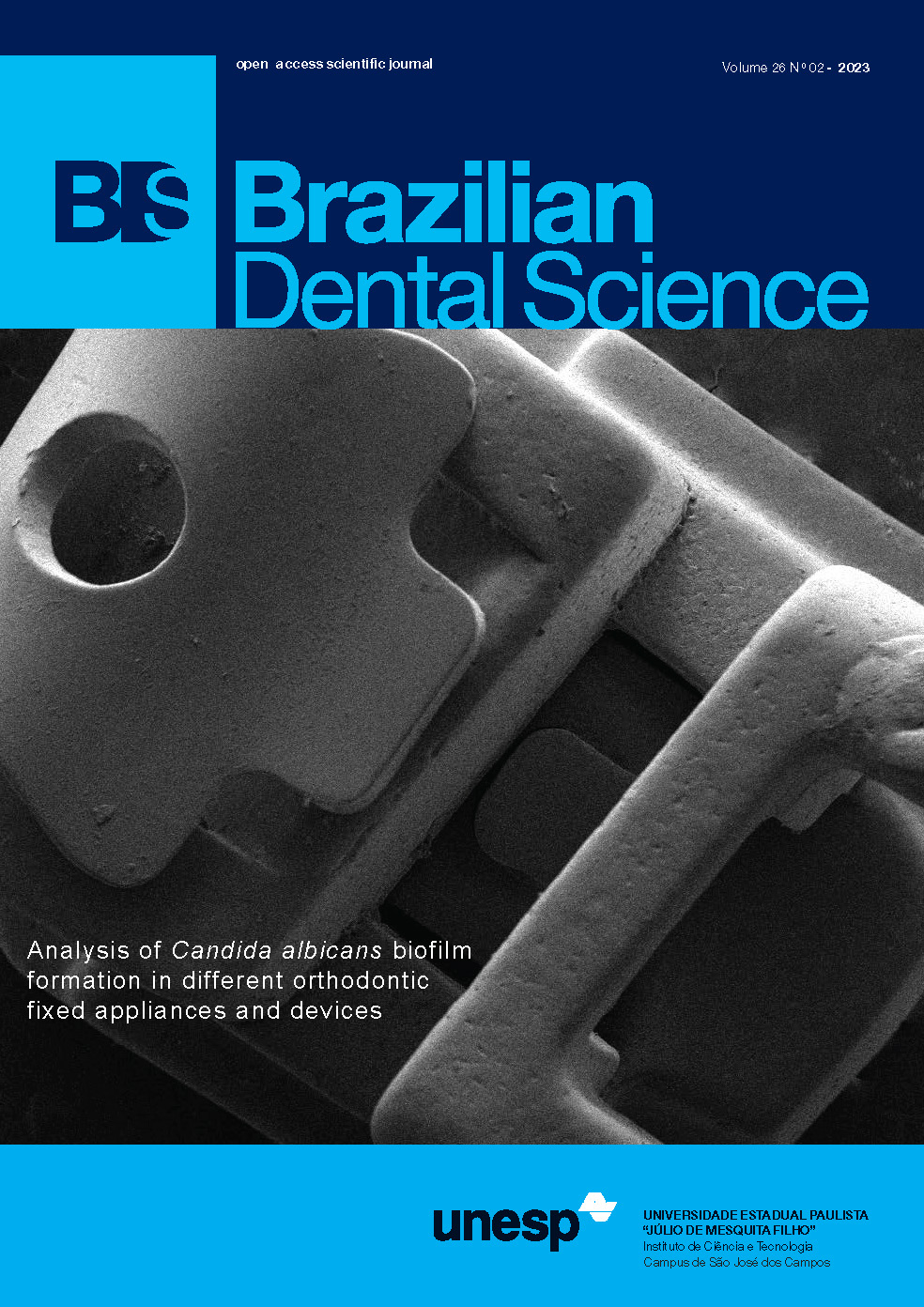Peri-implant bone level assessment of early loaded dental implants submitted to different prosthetic protocols: a case report
DOI:
https://doi.org/10.4322/bds.2023.e3569Resumo
Aim: The present split-mouth case report aims to describe the clinical and radiographic long-term outcomes of
the implant rehabilitation of two mandibular premolars in which the digital workflow was used to apply different
prosthetic protocols. Case description: A female 42-year-old patient with the absence of both mandibular second
premolars was submitted to guided surgery for the placement of platform-switching Grand Morse connection
implants. Digital workflow was used for implant and prosthetic planning, applying early loading protocol 21 days
after surgery. The implant on the right side received the final abutment at the time of surgery (without loading),
whereas the implant on the left side had a healing abutment placed, which was replaced by a temporary abutment
and then by a final abutment. Two months after surgery, both implants had final ceramic restorations delivered.
The patient was followed clinically and radiographically for 30 months, presenting excellent hard and soft tissue
outcomes, with bone level changes lower than 2mm for both implants. Conclusion: The use of digital workflow
and early loading, made the present implant-supported rehabilitation predictable, safe and time-efficient, resulting
in total patient satisfaction. Peri-implant bone level was observed to be stable after early loading protocol for
both platform-switching connection implants inserted, despite the prosthetic protocol applied.
KEYWORDS
Dental implants; Prosthesis; Computer-aided design; Platform-switching; Bone loss; Patient satisfaction.
Downloads
Downloads
Publicado
Como Citar
Edição
Seção
Licença
TRANSFERÊNCIA DE DIREITOS AUTORAIS E DECLARAÇÃO DE RESPONSABILIDADE
Toda a propriedade de direitos autorais do artigo "____________________________________________________________________" é transferido do autor(es) para a CIÊNCIA ODONTOLÓGICA BRASILEIRA, no caso do trabalho ser publicado. O artigo não foi publicado em outro lugar e não foi submetido simultaneamente para publicação em outra revista.
Vimos por meio deste, atestar que trabalho é original e não apresenta dados manipulados, fraude ou plágio. Fizemos contribuição científica significativa para o estudo e estamos cientes dos dados apresentados e de acordo com a versão final do artigo. Assumimos total responsabilidade pelos aspectos éticos do estudo.
Este texto deve ser impresso e assinado por todos os autores. A versão digitalizada deverá ser apresentada como arquivo suplementar durante o processo de submissão.




























